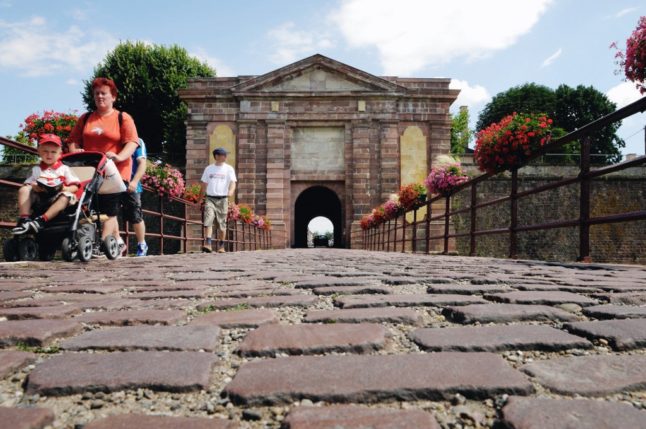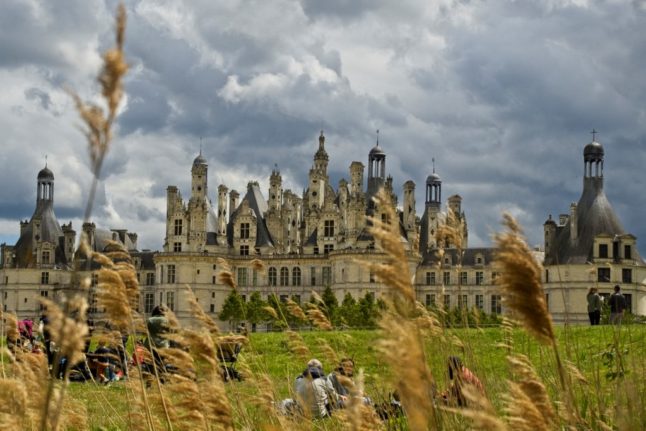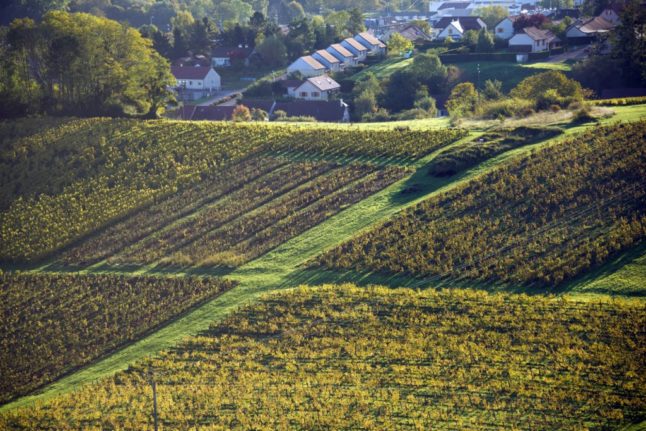The Local teamed up with travel guide publishers Lonely Planet, whose writer on France, Nicola Williams, helped to uncover some must-see sites that are rarely on the radar of most visitors.
1. Neuf-Brisach, eastern France
No foray into France is complete without a stroll around a citadel. Vauban built a load of them in France, but Neuf-Brisach on the French-German border is the one to target – it’s the country’s least-known Unesco World Heritage Site.
Louis XIV commissioned the fortified town to be built in 1697 to bolster French defenses. Its red sandstone walls were constructed in the shape of an eight-pointed star and the sleepy Alsatian town sits inside. See more here.

2. Nernier, eastern France
Lake Geneva is not all Swiss. Much of its southern shoreline is French. And while tourism has made some in-roads – on sunny Sundays Genevans motor to the medieval walled chateau-village of Yvoire for lunch – this lakeside stretch is uncharted tourist territory.
The sweet spot is Nernier, a shoreline village with cobbled streets, a pebble beach, and a quaint port where you can lunch at Restaurant du Lac and set sail on the lake in an old-fashioned steamer. More info here.
A simple & quietly elegant lunch mid-kayak @ Restaurant du Lac in Nernier #LakeGeneva #France #lp pic.twitter.com/Uxn7aCNWQ6
— Nicola Williams (@tripalong) September 9, 2016
3. Le Brame du Cerf, central France
The autumnal rutting season at Château de Chambord is a fabulous way of rediscovering the most famous Renaissance chateau in the Loire Valley – sans crowds. There is nothing more magical than creeping into the dewy forest at dawn or dusk to watch serenading stags, boars and red deer from hidden watch towers.
The domaine (estate) is Europe’s largest hunting reserve (there for the exclusive use of the French government no less). More info.

4. Musée d’Art Moderne, Céret, Roussillon
It’s been around since the 1950s, but this outstanding modern art museum in the Pyrenean foothills of south western France is one of those inspirational spaces where you can still lose yourself in a mind-blowing collection stuffed with Chagalls, Braques and Matisses.
Picasso donated 57 works to the museum and the town itself is a compelling mix of sun-blazed old stone and bon vivant living over Catalan sangria and tapas. More here.

5. Refuge d’Art, Haute-Provence
The French Riviera is a magnet for modern art lovers, but few make it as far as the cinematic limestone ridges, ravines and gorges of the Réserve Géologique de Haute-Provence, a sun-blazed wilderness near Digne-les-Bains in which British artist Andy Goldsworthy exhibits the largest public collection of his work.
His dramatic outdoor works of art – rock hives, cairns, stone sculptures you can sleep in – are dotted along a 150km hiking trail. More here.
Refuge d'Art d'Andy #Goldsworthy : Les Thermes " Vallée des Eaux Chaudes " #Digne les Bains | https://t.co/xaLJtTfF9j pic.twitter.com/JtYrgcmTXi
— St-Michel Observer (@St_Michel_Obs) February 18, 2020
6. Alésia Muséo Parc, Alise-Sainte-Reine
This remarkable historical site in Burgundy only opened in recent years and remains undiscovered by the non-French tourist set.
Walking around the rebuilt fortifications in the reconstructed Roman camp of Alésia, it is amazing to think this was the very spot where Julius Caesar thrashed chief of the Gauls Vercingétorix once and for all in 52 BC. The actors dressed up as Roman legions and battle demonstrations are particularly entertaining. More info here.
Alesia, France.
It was the capital of the Mandubii, one of the Gallic tribes allied with the Aedui. The Celtic oppidum was conquered by Julius Caesar during the Gallic Wars and afterwards became a Gallo-Roman town.#RomanSiteSaturday pic.twitter.com/YAVFLll2wv
— Digital Maps of the Ancient World (@DigitalMapsAW) October 3, 2020
7. Arbois and Pupillin, eastern France
Wine tourism is a big reason to travel in France and this little known twin-set of addresses in the remote Jura region in the east is pure, unadulterated joie du vin.
Alongside a cellar full of regular wines, vineyards around Arbois produce rich nutty Vin Jaune (yellow wine) and Vin de Paille (‘straw wine’), made from grapes laid out to dry on straw mats. End with a tour of the wine cellars in the village of Pupillin, built entirely from yellow stone. Find more information HERE.

8. Postman Cheval’s Palais Idéal
One of France’s strangest attractions, the Palais Idéal, in the Drôme department is an extraordinary example of architecture and the story behind it is just as astonishing.
The palace was built by postman Ferdinand Cheval, who had the idea after tripping over a stone in 1879. For the next 33 years he collected single stones to construct what he called a Temple of Nature. The palace was finally classified as a historical monument in 1969. More here.

9. Abbaye de Valmagne, Languedoc
This awe-inspiring abbey in southern France fuels two great French passions: wine and architecture. Built in the 12th century, it was inhabited first by Benedictine monks who cultivated vines on the estate.
With the French Revolution, the abbey church was deconsecrated and sold to Monsieur Granier-Joyeuse, a wine grower who turned the soaring Gothic stone church into a magnificent wine cellar. Never has wine tasting been so good. More here.
11 avril 1947 : L’église, le cloître et la salle capitulaire de l’abbaye cistercienne Sainte-Marie de Valmagne
sont classés aux monuments historiques.
Cette abbaye est située à Villeveyrac, dans le département de l'Hérault, au nord de la lagune de Thau. pic.twitter.com/kLoNFFRRS1— Marielle J.PdeG (@Flanerie_art) April 11, 2023
10. Ventabren, Provence
The whole point of Provence in the south of France is to laze away inordinate amounts of time lunching – exceedingly well. Enter Ventabren, a drop-dead gorgeous Provencal hilltop village just 14km from tourist-rammed Aix-en-Provence.
After roaming empty golden-stone lanes and chateau ruins, there is only one place to lunch al fresco with a sweeping view: La Table de Ventabren. More here.

Follow Nicola Williams on Twitter here.
An original version of this story appeared on The Local in 2014.



 Please whitelist us to continue reading.
Please whitelist us to continue reading.
Member comments